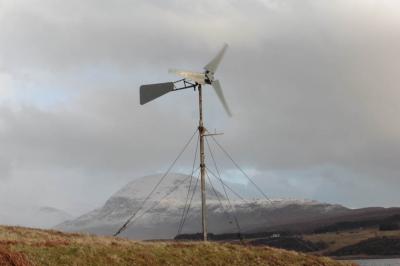Re-energising Scottish Communities?
Posted by Annabel Pinker on Monday 15 June 2015
In 2011, the Scottish government outlined a target of 500 megawatts of locally-produced energy by 2020. Since then, it’s set up a fund worth £20 million for the support of local renewable energy schemes. Such policies beg the question: What are the social and political implications of moves towards more locally-driven forms of energy production? Might shifts away from centrally controlled energy generation towards more decentralised modes of energy generation open up – as some have claimed – the potential for more vibrant, re-enfranchised, and participatory forms of social and political life? This is one of the questions I am hoping to explore as part of research with an Aberdeenshire Development Trust that is engaged in the complex process of planning a community-owned wind and solar plant on local land.
To begin with though, I thought it’d be interesting to explore a place where the links between renewable energy and everyday life are particularly visible. Scoraig, a peninsula on the west coast of Scotland, is just such a place. It’s not exactly easy to reach. Unless you’re willing to tramp the several miles on foot from the head of the loch to the peninsula’s townships, the only way to reach Scoraig is via a boat that crosses near the loch’s mouth. But it’s worth it when you get there. Not only is it outstandingly beautiful, boasting spectacular views over Little Loch Broom and the mountains that flank it, it also happens to have quite possibly the highest density of small wind turbines that you’re likely to find anywhere in the world. 
In the absence of grid electricity, Scoraig’s 80 or so inhabitants, many of whom moved there in quest of a simpler life in the 1970s, rely on the turbines to supply their energy needs. Almost every household boasts one turbine – although these will often be complemented by a gamut of other technologies, including solar panels, hydroelectric turbines, and back up diesel generators. Although many of the turbines have been built by one man – Scoraig resident, Hugh Piggott – no one turbine looks exactly alike. Whilst the basic design does not vary much, the turbines come in a smorgasbord of colours and ‘tail’-shapes. Such differences owe partly to a heritage of working creatively with scrap materials, transforming whatever was to hand to suit the purpose. Used railway telegraph poles were adapted as turbine towers, and truck batteries served to store the energy produced. The rusted ovens, bits of machinery, and blade remains that decorate Scoraig’s front gardens and stony beaches are a testament to this history. In some cases, these materials remain a resource – like the decaying Land Rover that is now used as an animal-feeder.
Scoraigers often talk of the intimacy they feel with the elements due to their energy technologies. A quick glance at their clusters of dials and digital meters indicating battery voltage, wind speeds, and the weather forecast – plus a step outside – are usually enough for a Scoraiger to decide whether it’s a good idea to use the washing machine or roast a chicken in the electric oven. Wind is welcomed, because it means electricity. But wind is also a threat; in January 2015, a hurricane blew down around 10 of the 40 or so turbines erected on the peninsula. Micro-wind technologies are precarious, as Hugh Piggott is at pains to point out. It wouldn’t be so difficult to obtain a grid connection; it would simply be a matter of laying cables onto the loch-floor, people said. But there seemed to be little appetite for such a change, just as the council’s offer of building a road to Scoraig some years ago was rejected without much debate. If there were a road, people would just end up living in their own little ‘kingdoms’, one resident told me – people would transfer seamlessly from one private box to another, like they do everywhere else. If they were connected to the national grid, there’d be no need to knock on neighbours’ doors for tools to fix a damaged turbine. Precarious systems were valued (though perhaps not always!) because they helped maintain the inter-dependencies that were seen as the stuff of social life.
But Scoraig is an unusual place. The experiment there unfolds on a small scale, and it has been taken up on a household by household basis. It has been contingent in large part on good relations with benign landowners and a remoteness that has protected the peninsula from regulatory demands. It’s a different matter when it comes to larger-scale renewables projects led by community-based organisations that are attempting to respond to more explicitly collective goals, whilst navigating in a complex and uncertain institutional landscape. How do local people think, talk and feel about energy under these conditions? And how does the process of struggling towards and achieving local ownership of energy infrastructures affect established power dynamics or how localities relate to government? Other thoughts and questions about community initiatives, arising from the same project, were recently discussed by my colleague Josh - click here to read about these. At times such as these, when the question of how we produce our energy is ever more contested, it’s worth exploring if and how everyday life alters where local people assert more control over their own energy production.






Comments
Post new comment